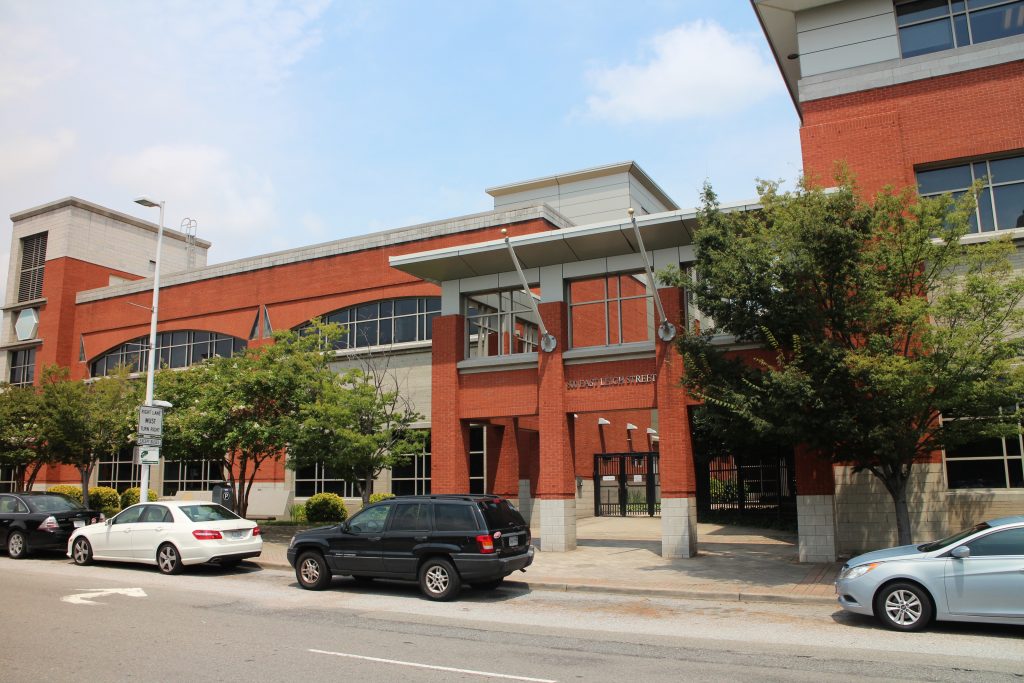With $13 million in fresh capital in place and a new CEO on board, an upstart local biotech company is trying to flex more muscle on the stock market as it works toward clinical trials of its main product.
AmpliPhi BioSciences, a 4-year-old publicly traded firm downtown that is working to develop a line of bacteria-killing drugs, last week carried out a 1-for-50 reverse split of its common stock in a bid to boost its share price and get more attention from investors.
The split was effective at the market’s opening bell on Aug. 7, and so far the strategy of decreasing the number of its outstanding shares has had the desired effect.
Prior to the split, the company’s stock traded on an OTC exchange at about 18 cents per share. It has since been trading at prices above $8 and $9 per share. Its ticker symbol is APHBD.
Baxter Phillips, AmpliPhi’s chief business officer, said that higher share price was the goal of the split and must be sustained in order for the company to “uplist” to the NYSE MKT, an exchange that caters to smaller companies and is operated by the New York Stock Exchange.
“Through our presentations and discussions with interested investors, we realized there is pent-up interest in investing in AmpliPhi,” Phillips said.
But because the stock had consistently traded for under $1 per share, “a lot of these investors simply can’t buy our stock because of restrictions,” Phillips said.
Many investment funds won’t trade in stocks below $5, he said, and the NYSE requires a $3-per-share minimum. The company has applied for a NYSE MKT listing but needs to maintain the $3 per share price for a certain amount of time before it can be approved.
AmpliPhi was created in 2011 as the result of a merger of two offshore biotech firms. Four years later and still in a pre-revenue phase, the company’s goal has been to isolate and harness naturally occurring bacteriophage into a product that can be used to kill bacteria that have grown resistant to antibiotics.
The company is focused on developing drugs to fight three key illnesses: a common lung infection that plagues cystic fibrosis patients, a digestive infection that’s common among elderly patients taking antibiotics, and staph infection “superbugs” such as MRSA.
AmpliPhi had been headquartered near Innsbrook for several years but recently moved to a small outpost downtown at 800 E. Leigh St. in the Virginia BioTechnology Research Park.
Though it is pre-revenue, the company has had plenty of money to burn. Its most recent $13 million capital raise in March follows $25 million in capital raised in two doses in 2014. Phillips said the company now has enough capital to likely last it through the third quarter of 2016.
It brought on a new CEO, M. Scott Salka in May. He’s had previous stints at other biotech firms and works out of San Diego.
The company also opened a new bacteriophage production facility in Slovenia in the spring. The 4,000-square-foot facility has about 15 employees who will produce the bacteriophage that the company will use in its clinical trials.
While Slovenia seems a far off locale, Phillips said it was essential to find an affordable way to produce the material in-house, rather than acquiring it from third parties long term.
“For us, it was the most cost-efficient and time-efficient manner to control our manufacturing destiny,” Phillips said on why the company chose Slovenia.
The company is now working through the long, onerous process of research and clinical trials on the road to its ultimate goal of FDA approval for its drugs. It began with pre-clinical trials on animals, and the next step is a Phase 1 trial for safety studies in humans, Phillips said.
Phase 2 would be proof of concept in humans, which Phillips said could potentially be achieved toward the end of next year. Phase 2 is also when biotech companies can try to strike funding and licensing deals to sell their drugs to big pharmaceutical firms.
Beyond that, it would try to earn the right from the FDA to make certain claims about the drugs and then finally to submit a new drug application for market approval.
Phillips said that all makes it difficult to predict when, if at all, the company’s products may finally hit the market.
“It’s very hard to tell. The standard mantra in big pharma metrics is 10 years and a billion (dollars),” he said. “For small companies like us that can move with more agility, we could see a product on the market in the early 2020s.
“Patience is certainly a virtue.”
With $13 million in fresh capital in place and a new CEO on board, an upstart local biotech company is trying to flex more muscle on the stock market as it works toward clinical trials of its main product.
AmpliPhi BioSciences, a 4-year-old publicly traded firm downtown that is working to develop a line of bacteria-killing drugs, last week carried out a 1-for-50 reverse split of its common stock in a bid to boost its share price and get more attention from investors.
The split was effective at the market’s opening bell on Aug. 7, and so far the strategy of decreasing the number of its outstanding shares has had the desired effect.
Prior to the split, the company’s stock traded on an OTC exchange at about 18 cents per share. It has since been trading at prices above $8 and $9 per share. Its ticker symbol is APHBD.
Baxter Phillips, AmpliPhi’s chief business officer, said that higher share price was the goal of the split and must be sustained in order for the company to “uplist” to the NYSE MKT, an exchange that caters to smaller companies and is operated by the New York Stock Exchange.
“Through our presentations and discussions with interested investors, we realized there is pent-up interest in investing in AmpliPhi,” Phillips said.
But because the stock had consistently traded for under $1 per share, “a lot of these investors simply can’t buy our stock because of restrictions,” Phillips said.
Many investment funds won’t trade in stocks below $5, he said, and the NYSE requires a $3-per-share minimum. The company has applied for a NYSE MKT listing but needs to maintain the $3 per share price for a certain amount of time before it can be approved.
AmpliPhi was created in 2011 as the result of a merger of two offshore biotech firms. Four years later and still in a pre-revenue phase, the company’s goal has been to isolate and harness naturally occurring bacteriophage into a product that can be used to kill bacteria that have grown resistant to antibiotics.
The company is focused on developing drugs to fight three key illnesses: a common lung infection that plagues cystic fibrosis patients, a digestive infection that’s common among elderly patients taking antibiotics, and staph infection “superbugs” such as MRSA.
AmpliPhi had been headquartered near Innsbrook for several years but recently moved to a small outpost downtown at 800 E. Leigh St. in the Virginia BioTechnology Research Park.
Though it is pre-revenue, the company has had plenty of money to burn. Its most recent $13 million capital raise in March follows $25 million in capital raised in two doses in 2014. Phillips said the company now has enough capital to likely last it through the third quarter of 2016.
It brought on a new CEO, M. Scott Salka in May. He’s had previous stints at other biotech firms and works out of San Diego.
The company also opened a new bacteriophage production facility in Slovenia in the spring. The 4,000-square-foot facility has about 15 employees who will produce the bacteriophage that the company will use in its clinical trials.
While Slovenia seems a far off locale, Phillips said it was essential to find an affordable way to produce the material in-house, rather than acquiring it from third parties long term.
“For us, it was the most cost-efficient and time-efficient manner to control our manufacturing destiny,” Phillips said on why the company chose Slovenia.
The company is now working through the long, onerous process of research and clinical trials on the road to its ultimate goal of FDA approval for its drugs. It began with pre-clinical trials on animals, and the next step is a Phase 1 trial for safety studies in humans, Phillips said.
Phase 2 would be proof of concept in humans, which Phillips said could potentially be achieved toward the end of next year. Phase 2 is also when biotech companies can try to strike funding and licensing deals to sell their drugs to big pharmaceutical firms.
Beyond that, it would try to earn the right from the FDA to make certain claims about the drugs and then finally to submit a new drug application for market approval.
Phillips said that all makes it difficult to predict when, if at all, the company’s products may finally hit the market.
“It’s very hard to tell. The standard mantra in big pharma metrics is 10 years and a billion (dollars),” he said. “For small companies like us that can move with more agility, we could see a product on the market in the early 2020s.
“Patience is certainly a virtue.”




